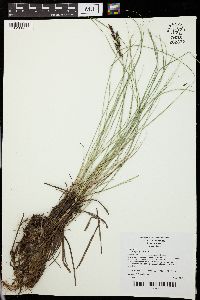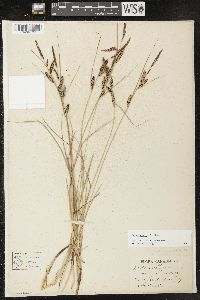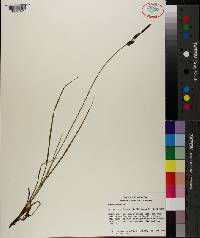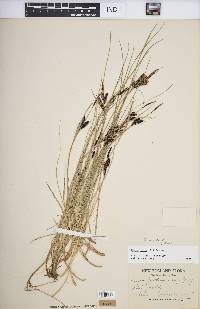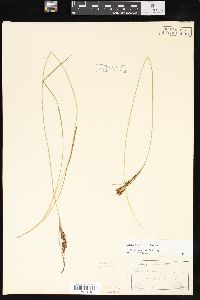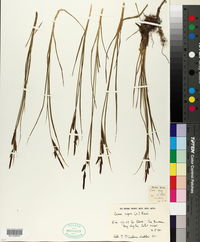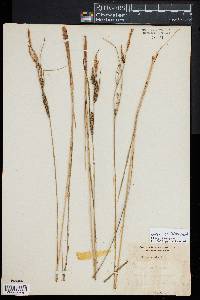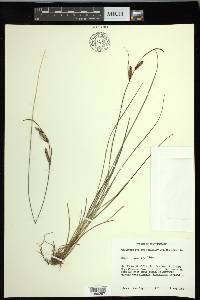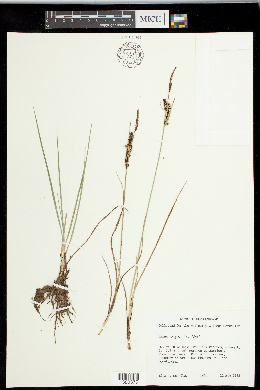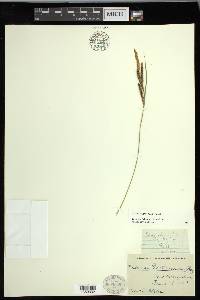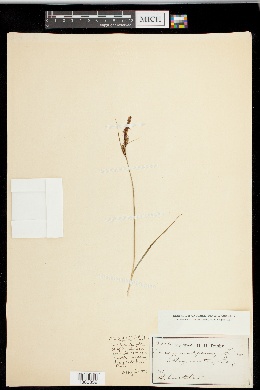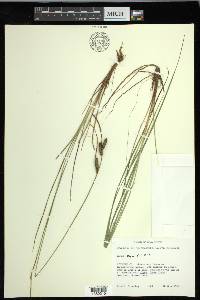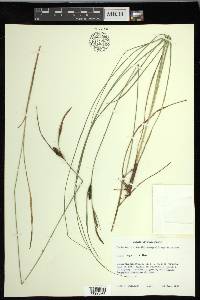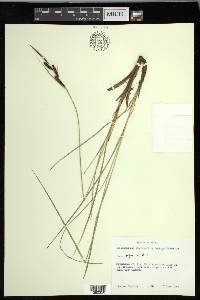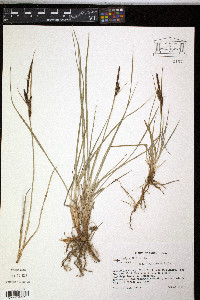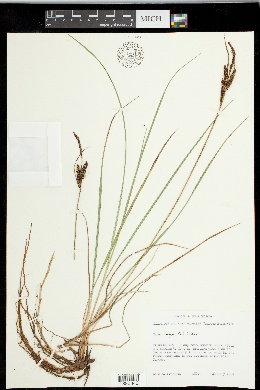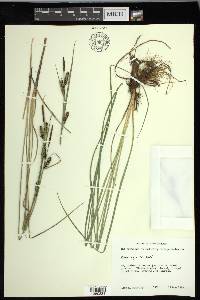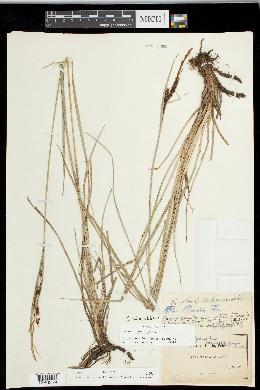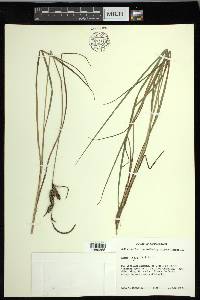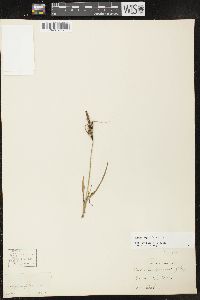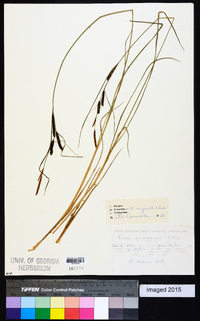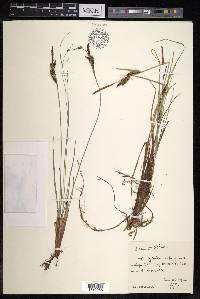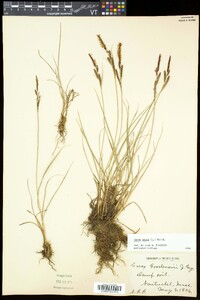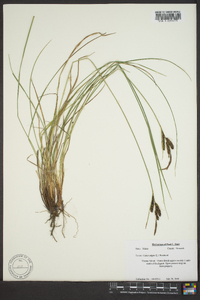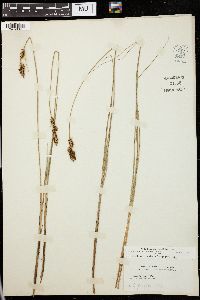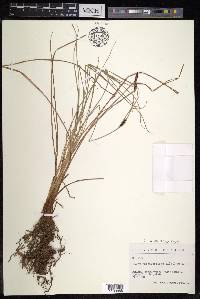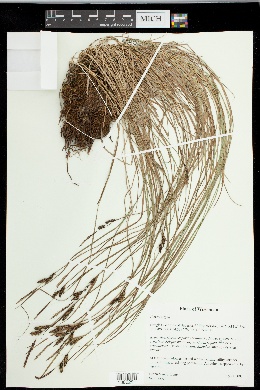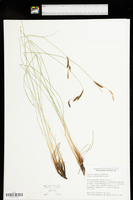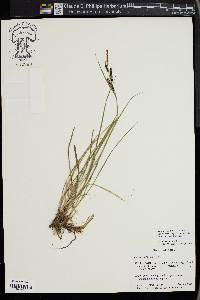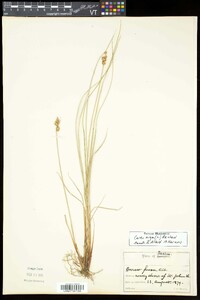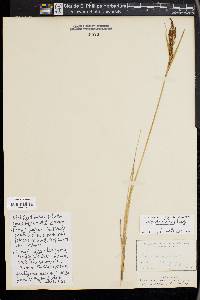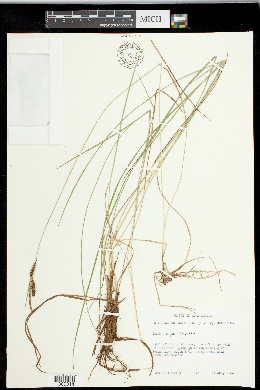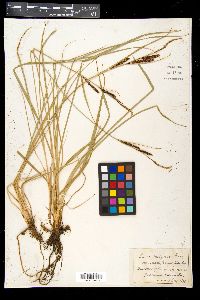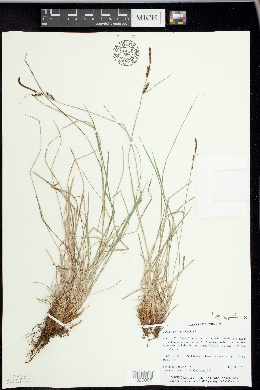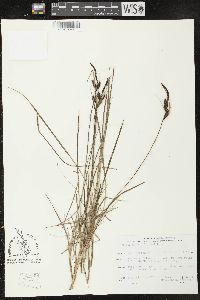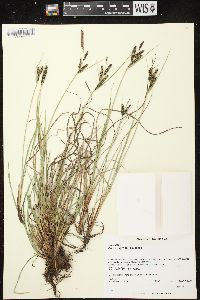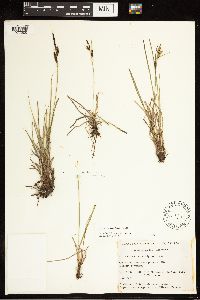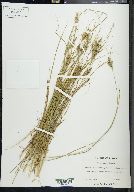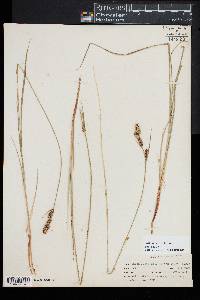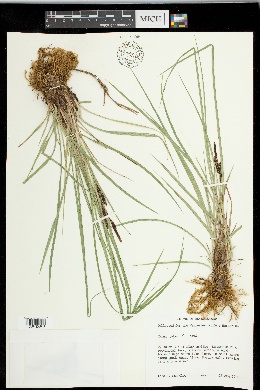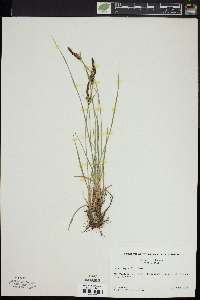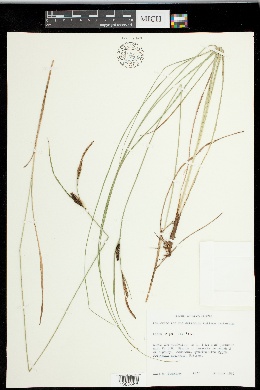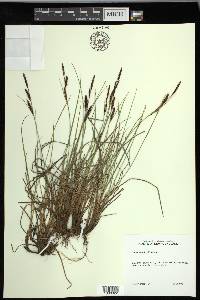Carex nigra
|
|
|
|
Family: Cyperaceae
Smooth Black Sedge
[Carex acuta var. nigra L., moreCarex fusca] |
Plants not cespitose. Culms acutely angled, 10-110 cm, scabrous. Leaves: basal sheaths red-brown; sheaths of proximal leaves glabrous, fronts lacking spots and veins, apex truncate; blades epistomic, 2-4.5 mm wide, adaxially papillose. Inflorescences: proximal bract subequal to inflorescence, 1.5-4 mm wide. Spikes erect; proximal 2-3 spikes pistillate, 1.2-4.2 cm × 3-5 mm, base obtuse or acute; terminal 1-2 spikes staminate. Pistillate scales dark purple-brown or black, shorter than perigynia, apex obtuse, awnless. Perigynia ascending, pale brown with red-brown or black spots on apical 1/2, occasionally black on apical 1/2, 3-9-veined on each face, somewhat flattened, tightly enclosing achenes, stipitate, ellipsoid or obovoid, 2-3.7 × 1.1-2.1 mm, somewhat leathery, dull, base truncate, distended, apex obtuse or rounded, papillose; stipe 0.1-0.3 mm; beak red-brown or black, 0.1-0.2 mm, orifice scabrous. Achenes not constricted, whitish iridescent, base adnate to perigynium. 2n = 83, 84, 85. Fruiting Jul-Aug. Wet meadows; 0-200 m; Greenland; St. Pierre and Miquelon; N.B., Nfld. and Labr., N.S., P.E.I., Que.; Conn., Maine, Mass., Mich., N.H., N.Y., Vt.; Europe; w. Asia. Plants of Carex nigra are variable in height and degree of development of rhizomes, but are not separable into distinct taxa. Much less morphologic or ecotypic variation appears to exist in North America than in Europe (A. O. Chater 1980). In North America, C. nigra hybridizes with C. stricta, C. aquatilis, C. paleacea, C. subspathacea, and C. salina. It is a member of the C. acuta subgroup, based on the veined, stipitate perigynia distended by the base of the achenes; it differs from the related sympatric C. lenticularis by the rhizomatous habit, dark green leaves, black scales and perigynia, and short inflorescence bract. Carex nigra appears to be declining in abundance in southern New England as a result of changing patterns of land use and the loss of wet fields and pastures.
Loosely tufted, with both long and short rhizomes, the stems 1-8 dm, surpassing the lvs; main lvs lacking palisade-tissue, 2-3 mm wide, V-shaped in x-section, with stomates and papillae only on the upper side; staminate spikes peduncled, 1-3 dm, often with 1 or 2 smaller ones at its base; pistillate spikes 2-5, contiguous or separate, cylindric, 1-4 cm נ5 mm, often acute, erect, sessile or the lowest short-pedunculate, commonly with a few terminal staminate fls; bracts sheathless or with a very short purple-brown sheath, the lowest lf-like but shorter than or barely equaling the infl, the upper much reduced; pistillate scales ovate or oblong, usually slightly narrower and considerably shorter than the perigynia, with dark brown or atropurpureous sides and very narrow pale midvein scarcely reaching the obtuse tip; perigynia thin, planoconvex, ovate to obovate, 2.0-3.7 mm, half to three-fifths as wide, rounded to obtuse at the tip, finely few-nerved (as well as 2-ribbed), minutely beaked, green, becoming tawny, distally dark-blotched, papillate throughout; achene lenticular, loosely enveloped in the lower half of the perigynium; 2n=ca 84. Wet meadows and salt-marshes, mostly near the coast; Lab. to Conn. and Vt.; disjunct in n. Mich.; widespread in Europe. (C. acuta, misapplied) Gleason, Henry A. & Cronquist, Arthur J. 1991. Manual of vascular plants of northeastern United States and adjacent Canada. lxxv + 910 pp. ©The New York Botanical Garden. All rights reserved. Used by permission. |


